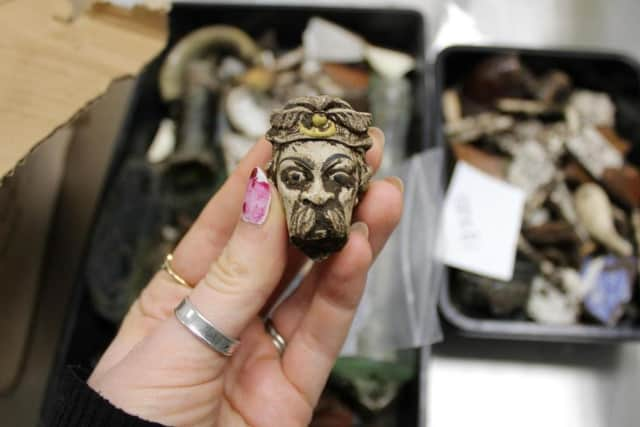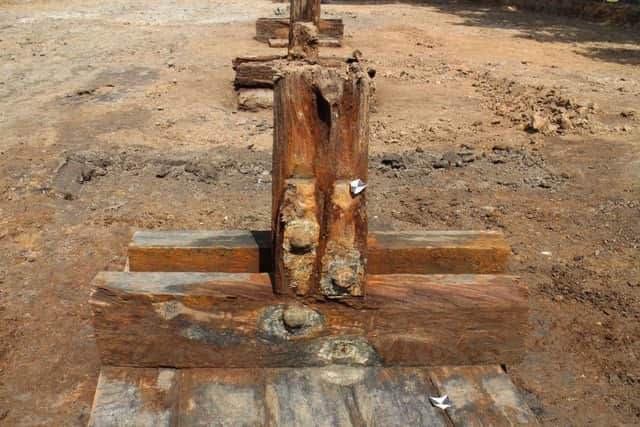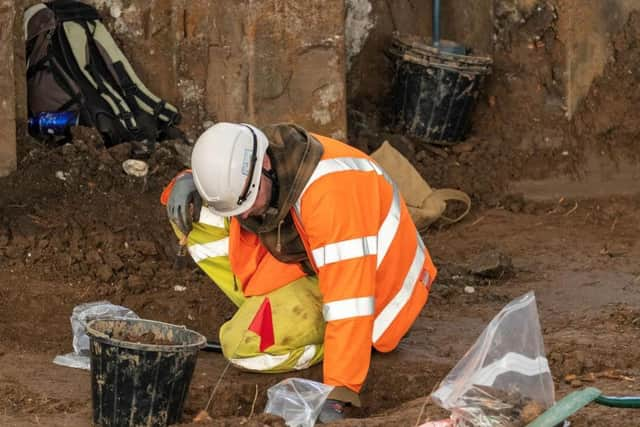Mysterious buildings found in dig shed new light on the early history of Hull
There are now 70 archaeologists working under huge tents on the Trinity burial ground site, which is more than two centuries old, just off the A63.
On the east side of Commercial Road the team found partial footprints of two buildings, which don’t show up on any post-medieval maps and may relate to Wyke - the settlement which pre-dated Hull and was founded late in the 12th century by the monks of Meaux Abbey as a port from which to export their wool.
Advertisement
Hide AdAdvertisement
Hide AdThey extend beneath the wall of the burial ground and below deposits linked to a warehouse, hit by an incendiary bomb in the Second World War.


One of the buildings, constructed in limestone, was associated with a single fragment of a jug made in Beverley in the late 13th or early 14th century.
The other was built on top of the deposit that contained 13th to 14th century pottery. It had limestone elements and the remains of a brick sleeper wall.
Brick has been used in Hull since the early 14th century.
Archaeologists don't know the age of the buildings, or their purpose but say they could be significant as they were built in stone.


Advertisement
Hide AdAdvertisement
Hide AdStephen Rowland, project manager for Oxford Archaeology North, said: “It’s just possible the buildings are connected to the poorly understood settlement of Wyke, documented in the 12th and early 13th century. At that time the course of the Old River Hull flowed along what’s now Commercial Road and Manor House Road.
"This would’ve been a prime focus for settlement and economic activity.
“Some time during the 13th century the Old River Hull appears to have become blocked, and its importance was overtaken by the current course of the River Hull. This led to a refocusing of settlement so that, by the later 13th century, when Edward I took a keen interest in the town and it was named Kingston upon Hull, the main settlement focus was Hull’s Old Town.”
Tens of thousands of burials were made in Trinity burial ground, which was used for nearly 180 years.


Advertisement
Hide AdAdvertisement
Hide AdAround 17,500 will be dug up and reinterred in the remaining area of the burial ground.
Following the reburials there will be work to restore the monuments along with replanting of trees and other landscape works.
Archaeologists are also hoping to uncover the plan and internal organisation of an 18th century gaol, which stood at the north-east corner of the burial ground.
It was referred to as the New Gaol and housed men and women awaiting trial for minor offences including debtors, as well as those due to be transported to penal colonies like Australia.
Advertisement
Hide AdAdvertisement
Hide AdIt closed in 1829, with the plot later becoming a sawmill in the 19th century and a brass and copper works and lead plant in the early 20th century.
Among the finds unearthed so far are a bone domino piece and a decorated clay pipe bowl, as well as various bits of pottery and tile.
Comment Guidelines
National World encourages reader discussion on our stories. User feedback, insights and back-and-forth exchanges add a rich layer of context to reporting. Please review our Community Guidelines before commenting.